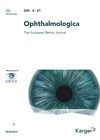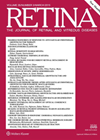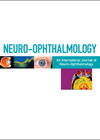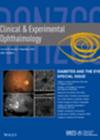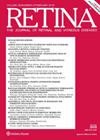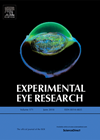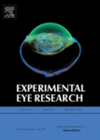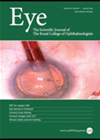You searched for "Diabetic"
Management of diabetic macular oedema (DMO)
1 February 2018
| Kurt Spiteri Cornish
|
EYE - Vitreo-Retinal
|
Anti-VEGF therapy, Diabetic macular edema, Steroids
The authors present guidelines on current diagnostic and therapeutic procedures in the management of DMO. Fluorescein angiography (FA) and optical coherence tomography (OCT) are recommended before starting treatment to help diagnose and stage DMO, and can be repeated if there...
Insights in resistant diabetic macular oedema
5 August 2022
| Sofia Rokerya
|
EYE - Vitreo-Retinal
This article gives a bird’s eye review of the different modalities for the treatment of diabetic macular oedema (DME). The debut of anti-VEGFs has brought a paradigm shift in DME management. This treatment has now become a major breakthrough in...
Hyper reflective foci (HRF) on OCT in diabetic retinopathy
1 April 2015
| Saruban Pasu
|
EYE - Vitreo-Retinal
This study investigated the presence of hyper reflective foci (HRF) in asymptomatic patients affected by type 1 or type 2 diabetes, separately, without clinically significant diabetic macular oedema and visual impairment. In total 71 eyes with non-proliferative diabetic retinopathy were...
Relationship between diabetic retinopathy and cerebrovascular reactivity changes
1 March 2024
| Claire Howard
|
EYE - Neuro-ophthalmology
|
Cerebral vasomotor reactivity, breath-holding index, diabetes mellitus, diabetic retinopathy, transcranial Doppler ultrasound
Cerebral micro-angiopathy caused by diabetes can manifest itself as an impairment in cerebrovascular reactivity. Transcranial doppler ultrasound (TCD) is a cost-effective and non-invasive way to measure the cerebrovascular reactivity. This study aimed to assess the relationship between the grade of...
Control of diabetic retinopathy after bariatric surgery
3 June 2021
| Tasmin Berman
|
EYE - Vitreo-Retinal
This systemic review and meta-analysis assessed prevalence of diabetic retinopathy including sight-threatening diabetic retinopathy after surgery. They included 14 studies with 110,300 surgical patients and 252,289 control subjects. They proposed that the risk of having any form of diabetic retinopathy...
Retinal ganglion cell loss in diabetes and diabetic retinopathy
1 October 2016
| Anjali Gupta
|
EYE - Vitreo-Retinal
The aim of this observational case control study was to evaluate the association of diabetes and diabetic retinopathy (DR) with retinal ganglion cell loss. Cases were Chinese patients with type 2 diabetes with and without DR, aged 40-80 years. Eligible...
Retinal ischaemia on OCTA and diabetic retinopathy grade
1 April 2020
| Saruban Pasu
|
EYE - Vitreo-Retinal
The authors quite rightly point out that quantification of retinal ischaemia has the potential to serve as a biomarker for diabetic retinopathy disease progression. They set out to investigate the relationship between area of ischaemia on a swept source OCTA...
ANGPTL-4 inhibition reduces inflammation in diabetic retinopathy
1 June 2018
| Graham Wallace
|
EYE - Vitreo-Retinal
Diabetic retinopathy (DR) is the most common cause of blindness in working-age humans, and numbers are rising due to increased cases of type 2 diabetes (T2D). T2D is associated with increased obesity and dyslipidaemia, which is a major risk factor...
Corneal thickness in patients with diabetic peripheral neuropathy
This cross-sectional study assessed corneal thickness in association with diabetic peripheral neuropathy (DPN) severity. The study also tried to identify the layer of the cornea most affected by DPN status. Performed at the University of Michigan the study included three...Akimba mice, a model of human diabetic retinopathy
1 October 2014
| Graham Wallace
|
EYE - Vitreo-Retinal
Diabetic retinopathy (DR) is a major complication of diabetes and a growing problem as the systemic disease becomes more prevalent. DR develops insidiously from an asymptomatic form through to vascular damage that leads to oedema and breakdown of the blood-retinal...
Is myopia protective against progression of diabetic retinopathy?
2 December 2019
| Tasmin Berman
|
EYE - Vitreo-Retinal
This population-based cohort study assessed the association of refractive error with the incidence and progression of diabetic retinopathy (DR); 1562 eyes of 860 patients with diabetes and gradable retinal photographs were included. Baseline data was taken between 2004-2009 and follow-up...
Avastin vs. Volon A for diabetic macular oedema
1 June 2014
| Nana Theodorou
|
EYE - Vitreo-Retinal
This prospective randomised interventional clinical trial compared 30 diabetic patients with macular oedema treated with either intravitreal injections of bevacizumab (Avastin) or triamcinolone (Volon A). One group initially received three injections of 2.5 mg Avastin in monthly intervals whilst the...


